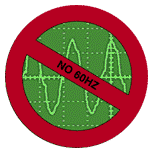
Take Home Assignment for Labs #5 & #6
GROUNDING
1. List 10 different ways to remove 60 Hz noise from your system
2. What is a ground loop and how do you avoid creating one?
3. What is the principle behind the Faraday cage?
ELECTRODES/RECORDING TECHNIQUES
1. Compare and contrast glass to metal electrodes. Under what circumstances would you use one rather than the other? What is the ideal taper for the end of a glass electrode?
2. What is capacitance compensation for glass electrodes and why is it needed?
3. What would you fill a glass electrode with for extracellular recordings within the membranous labyrinth of the semicircular canals (from the endolymph side)? What would you fill a glass electrode for measuring standard neurons extracellularly?
4. Describe AC vs DC coupled amplification. What are the appropriate conditions for using each of these two modes?
5. Describe the principle of differential recording. Why might it not work if you don't use the same type of electrode for A and B inputs?
6. How much Johnson noise will a 50 megaohm electrode have at 27 degrees C? What's the smallest (extracellular) neuronal signal that can be measured with a 2:1 signal to noise ratio? How would you improve this ratio by manipulating certain parameters on the amplifier?
INTEGRATIVE QUESTION
You're trying to record a weak neuronal signal and it's swamped by 60
Hz (and possibly other frequency) noise. Discuss your troubleshooting strategy,
alternative approaches, etc. Don't neglect issues of relationship between
the electrode and tissue (for example, the fluid around your electrode(s)
is conductive---it may short out the signal in some recording situations;
what do you do?).
